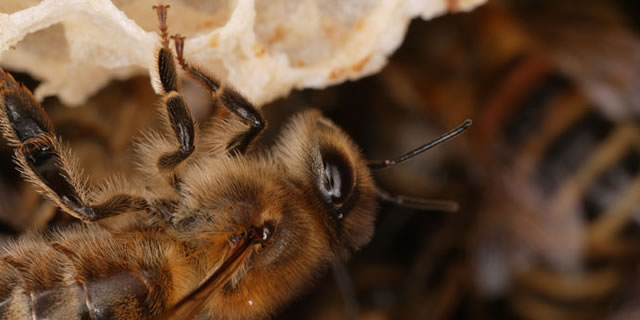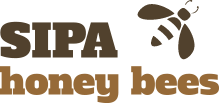
- Buckfast honey bee
breeders & suppliers: - mated queen bees,
nucleus colonies
and full working hives
for sale to beekeepers
Calm and gentle bees are a delight to work with. This is one of our highest priorities in selecting breeding stock from which to produce our Nucleus Colonies (nucs) and Queen Bees.
Check availability:
Honey Bee Queens, Nucs and Hives FAQs
How to make a balance payment through our website
Go to our website, select the appropriate page (either nucs or hives).
Scroll to the product you want to
make the payment against. Even if it says Sold Out
On the right of the page opposite your product of
choice, select from the drop down “Balance” and add to cart.
This will take you directly to the Paypal
payment gateway.
Update the number of items if greater than one.
Use “Paypal Checkout” if paying via your Paypal Account
Use “Checkout” if using a Debit or Credit Card
Follow the onscreen instructions to complete your payment.
Why we can't give you more prior notice when shipping queens
As large scale queen and nuc producers we are extremely busy during the beekeeping season, we don't have the time to make unecessary phone calls or emails.
I’ll take a moment to explain why we can’t individually email people in advance of the day of shipment. We generally have a huge despatch list to fulfil ; in order to do that we inspect the mating nucs and only cage queens that meet our very high standard. We never know how many queens meet that standard until the day of caging and shipping, which of course is weather dependent. That’s why we email on the day of shipping, confirming your queen has been checked, selected, caged and shipped.
You don’t need to pre-prepare anything in advance of recieving your queen(s), you only need your colony to be queenless for 24/48 hours. Your queen will be perfectly fine remaining in the packaging in in a temperate environment, just give a single drop of water per day onto the grille of the cage.
If you already have a queen in your colony, wait untill you have recieved your new queen before despatching the old one. (a good insurance policy)
So, please don't ask us to give a week or even a few day's notice, we can't do that !
Collecting Nucleus Colonies
We WILL CALL YOU to make the arragements for collecting your bees, so please avoid calling or emailing us to "check how the nucs are doing" or to ask "when will the bees be ready" or "Just need a collection date because of travel". We just don't have time to answer these types of enquiries. Once we have agreed a date and time, location details for collection will be emailed to you, It's importent that you see that email so do check your spam folders.
Travelling home - Your Nucleus should be adequately protected from sun and excessive heat during the journey, ventilation grilles should not be covered. Please ensure that the container is held upright in a stable position and not allowed to fall or move during transit.
In the unlikely event you have a few “escapees” from your nuc box, please check that it has remained sealed, then open the car windows, any remaining bees will fly out as the car is moving forward.
We follow these best practice guidelines to produce your Nuc..
Installing your Nuc
If the weather is poor, ie raining, store the nuc under cover and out of the sun ideally in a garage or cool shed until the weather improves. Give a light spray of water over the ventilation holes daily.
On arrival at your apiary, place the travelling box in front of your hive and open the small door to let the bees fly. Once the the bees have oriented and are flying freely you can start the transfer to your hive.
Five framed Nucs will have an additional blank frame of foundation installed to stabilise the nuc.
When you are ready, take the frames and bees from your nuc box one by one and place them in the centre of your hive brood box in the same order and orientation as you remove them from the nuc. You will find the queen in a plastic cage suspended between the frames. Once the frames are installed in the hive, hold the cage close to the top of the frames, slide the back open and release the queen. She should move down into the hive and start work.
Any bees left in the travelling box can be sprayed with water or sugar syrup and then shaken into the hive box. You can fully dismantle the box if you need to.
Fill out the remaining space with drawn frames if you have them or frames with foundation.
Give the hive a feed of 1:1 sugar syrup; this will encourage the bees to draw the remaining foundation. Continue to feed 1:1 Sugar syrup while the colony is establishing, being mindful to allow the queen adequate room to continue laying. If your local pollen supplies are limited, consider feeding a good quality pollen supplement, this will encourage rapid brood expansion.
Leave the hive undisturbed for 5 or 6 days before attempting a quick check to see how things are progressing. Your colony should expand quite quickly over the coming weeks once established.
Remember to monitor the colony for Varroa Mites and treat accordingly. We use MAQ Strips in May and September/October and Oxalic Acid vapour at Xmas/new year.
Be mindful of adverse reactions to bee stings, even if you have been stung by honeybees previously, it’s a good precaution to carry Piriton with you. For serious adverse reactions call 999 immediately, don’t wait to feel better.
Mated Queen Bees
Your Queen will be shipped with 8 – 10 attendant bees in the cage and a supply of queen candy.
When you
receive your Queen, place a single drop of water onto the cage, your bees may appreciate a drink after
travelling!
You will have a queenless colony into which your new queen is to be introduced. There should be no queen cells present, please inspect the colony and remove any queen cells that have been started.
If you feel confident enough, remove the attendant bees from the cage leaving only the queen. Doing this can aid in the queen being accepted more easily. However this procedure is not mandatory by any means.
At this point do not remove the cover from the base covering the candy.
The cage containing your Queen and any remaining attendants should be suspended between two brood frames in the centre of the hive, a cocktail stick can aid in this.
Re-assemble the hive and leave alone for 4-5 days. After this time you can check to see if the bees in the colony are calm around the queen cage. If they appear agitated or are balling the cage, leave it for a few more days then check again.
When you feel that the bees have accepted the new queen, remove the cage and snap out the end covering the candy and replace the cage in the hive as before and re-assemble the hive. Your bees will eat away the candy and release the Queen in to the hive. Leave alone for at least a week before checking, you should see eggs when you do.
Please remember, sometimes Queen Introductions do not go very well, the Queen can be damaged or killed by the receiving bees, or she may abscond. That, I’m afraid is what all beekeepers sometimes experience. We cannot guarantee that all queen introductions will succeed.
VSH (Varroa Sensitive Hygiene)
VSH (Varroa Sensitive Hygiene) is an important mechanism of resistance to varroa mites which serves as a natural and physical check on the varroa mites’ ability to reproduce and expand their population within a honeybee colony.
The best resistance is found in 100% VSH bees. However, hybrid VSH bees (e.g. VSH queens open mated to non-resistant drones) also have significant resistance to varroa mites. A valuable feature of VSH is that bees will express a high level of mite resistance when a colony contains as little as 50% of the sex alleles for VSH.
During the first 5 weeks after successful introduction of a VSH queen, the presence of that queen has no effect on the mite population. It will take at least 55 days for the progeny of a newly introduced VSH queen to fully influence a mite population.
Hygiene is performed by nest cleaning bees aged 15-18 days old. Hygienic removal of a mite infested pupae only takes place during a two-day segment of the mite’s reproductive cycle when an “uncapper” smells the infested brood (4-6 days post capping) and chews a pinhole through the cell cap. Subsequently, “removers” enlarge the hole and either eat the infested pupa or pull it from the brood cell. Some re-capping may also occur.
VSH bees do not respond to all mite-infested pupae with equal intensity. They are more likely to remove mite-infested pupae that are not pigmented or only lightly pigmented (stages 2–4) than prepupae (stage 1) or more darkly pigmented pupae (stages 5-8). Additionally, they are much less hygienic towards mite-infested drone brood than worker brood.
Our VSH Queens will not completely eliminate the need for additional varroa mite control measures, but will reduce the level of infestation to manageable levels and increase the chances of long term colony survival.
The VSH Queens we have for sale are not intended for ongoing breeding, future generations may only have a low VSH expression.

